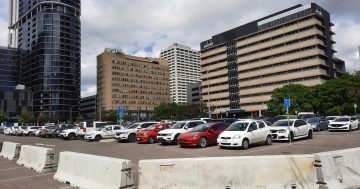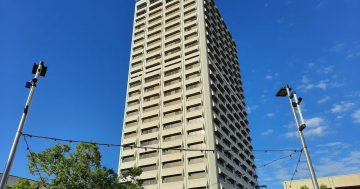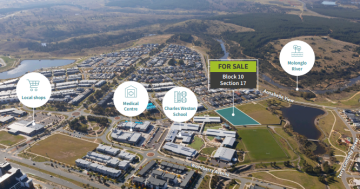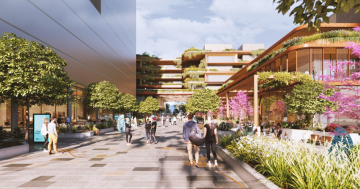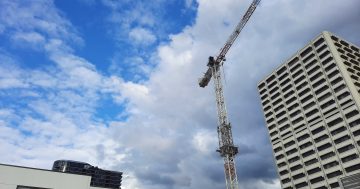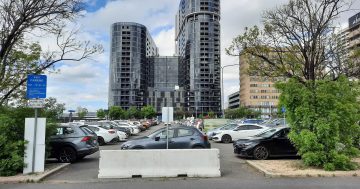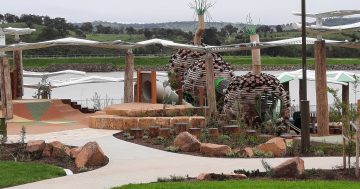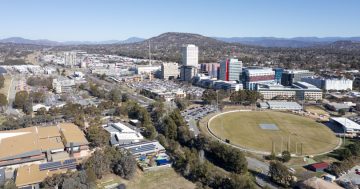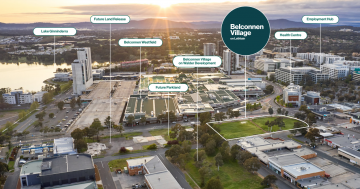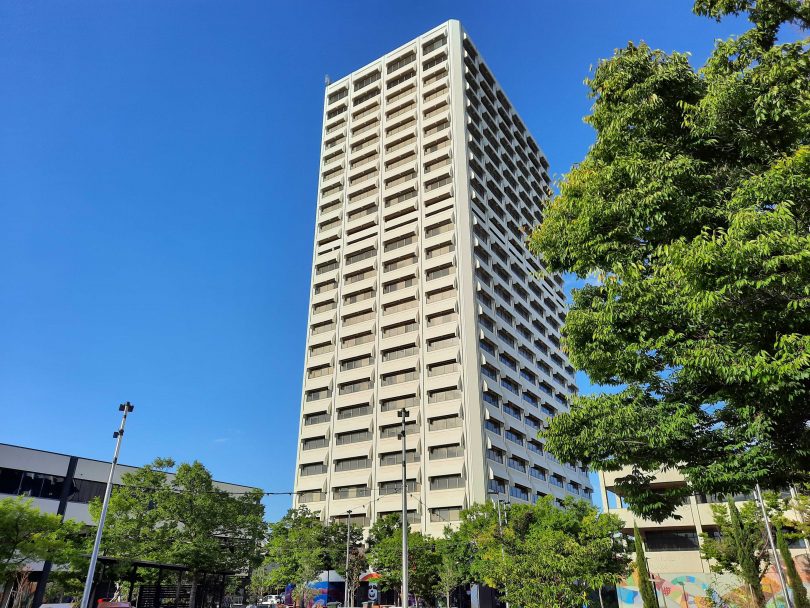
Woden squeeze: The Lovett Tower is to have a 24-storey neighbour on the site of the building at right. Photo: Ian Bushnell.
It may seem like an issue from the department of the bleedin’ obvious, but for the ACT’s community councils, it’s more like groundhog day.
As the ACT Government implements its 70:30 infill policy and town centres become the focus of increasing densification, community councils from Gungahlin to Molonglo are pleading for spaces to be reserved for community facilities and parks to service growing populations.
Woden is becoming a case study of dysfunctional town planning, where high-rise residential towers are crowding the skyline as thousands more Canberrans old and new call it home.
The revived approval of a 24-storey building on the edge of the Square, and disturbingly close to the 26-storey Lovett Tower, is emblematic of an attitude of cramming as many projects as possible into the Town Centre.
While it is acknowledged that areas of Woden are tired and in need of rejuvenation, and projects such as the Interchange and CIT projects are welcome, it seems little thought has been given to where all these people are going to relax and play, apart from yet more coffee shops.
Another concern is that the linkages and corridors within the Town Centre are at threat as ad hoc solutions are imposed to resolve problems development is creating.
Over in Belconnen, council chair Glen Hyde cites Woden as an example of what needs to be avoided as it explores development choices through the Suburban Land Agency’s latest land releases in the Town Centre.
Mr Hyde sees the releases as an opportunity to provide community facilities and spaces and link the Town Centre precincts, as well as commercial and residential.
In an area where high-rise residential development such as the High Society and Cirrus projects now dominate the skyline, he hopes some of the action will tilt towards what the people who will live, work and play there need.
Nearby in West Belconnen, the ageing Kippax Centre is desperate for an upgrade as increased population, fuelled by infill development and the Ginninderry housing estate, puts the squeeze on the facility.
But the Kippax Fair owners and the community are yet to be given any timetable for when this process may get off the ground.
In Gungahlin, Community Council chair Peter Elford is exasperated by the disjointed approach to a never-ending consultation on community and sporting facilities. At the same time, in the Town Centre, high-rise residential development continues apace at the expense of commercial job-creating projects.
In Molonglo, Coombs has been a planning debacle, with the completed shopping centre continuing to sit empty and community facilities almost non-existent.
The government appears to have heeded the lessons there and changed its approach in Wright and Whitlam but, like elsewhere in Canberra, community infrastructure is not keeping pace with population growth.
It is something the community there is keen to avoid when the Molonglo group centre is built.
The worsening traffic snarl in the morning exodus out of Molonglo is symbolic of the area’s growing pains.
A new report commissioned by the Australian Conservation Foundation has warned of declining tree coverage in our cities and the dangers of heat islands due to development.
It highlighted the importance of green infrastructure to mitigate the impacts of climate change, and while Canberra appears to be more blessed than other capital cities, increased densification, particularly in the Town Centres, means sufficient room needs to be reserved for plantings of appropriate tree species, permeable spaces and landscaping, as well as mandating green architecture.
All these things appear to be part of the planning landscape in Canberra, yet as the community councils’ experiences show, what is occurring on the ground can result in outcomes contrary to the intent of master plans, government policy and even the best intentions of developers.
In a Territory where land is currency, the government is beset by competing interests as it battles to find the money to pay for the services people demand and provide sufficient land to meet ever-increasing housing needs.
Meanwhile, new Property Council head Arabella Rohde wants a planning system that encourages innovation, out-of-the-box thinking and strives for great development.
The planning system review is tackling these issues but, for many of the ACT’s communities, change may come too late.











